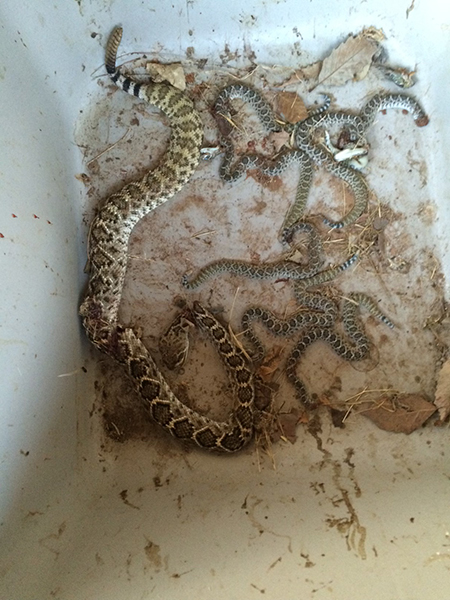It’s still snake season in most of Texas. Practically speaking, it almost always is.
Western diamondback rattlesnakes (Crotalus atrox) are by far the most abundant Texas rattlesnakes (there at least five others).
Diamondbacks occur in the western two-thirds of the state. And what some people don’t realize, they are present on the South Texas Islands.
One afternoon on Mustang Island just down the beach from Port Aransas, a couple of us decided we’d played enough in the surf and went just over the first dune, spread our beach towels, and laid down. Shortly after, we both felt something moving in the soft sand beneath our towels. We never saw what it was since we abandoned our refuge instantly. Nap-tus interruptus!
It could have been any sand dune dweller – like fiddler crabs – although they’re usually closer to water. But we didn’t wait to find out. With hearts still racing, we grabbed corners of our towels and headed for the jeep. It also might have also been a rattler, They’re there.
In addition to being the most profuse venomous snake in Texas, the Western diamondback also leads the league in biting humans. Now, don’t get me wrong; they don’t wake up in the morning (or whenever they arise) thinking, “I can’t wait to go bite a human, today!” Most snake bites occur when somebody stumbles onto one in its native habitat. Some fools are bitten because they are messing with them. Most bites are defensive measures by a frightened reptile.
A friend, Horace Gore, was turkey hunting one spring morning and stopped on the trail to listen for gobblers. He ignored something against his boot, figuring it was a stick. He felt it a couple more times before looking down. It was a small rattlesnake that had tried to bite his boot THREE TIMES!
According to Alan Tennant’s “A Field Guide to TEXAS SNAKES,” female rattlesnakes deliver between nine and fourteen live-born young’uns in September or early October. Most are around nine to thirteen inches long.
Although tales of six-footers abound, research indicates the average Diamondback is about three to four feet long. The King Ranch Visitors’ Center in Kingsville has a mounted rattler that measured just over seven feet! My friend, Butch Tompson, caught it when he worked on the ranch. South Texas and the Rolling Plains have large ones.
One year when I lived in Alice, the Corpus Caller carried a report of quail hunters on King Ranch seeing an unusual number of rattlers. I don’t remember what month it was, but quail season nowadays begins near the end of October. Some speculated the snakes were looking for a warm winter hangout.
Tennant’s book offers another explanation. He relays that in early fall, many young rattlers are noticed trying to find their way in a new world. Perhaps these could have been newborns on the move, aimlessly slithering around. Quail season may have been too late for that, however.
But for right now, watch out for them. They’re crawling.
JJ





